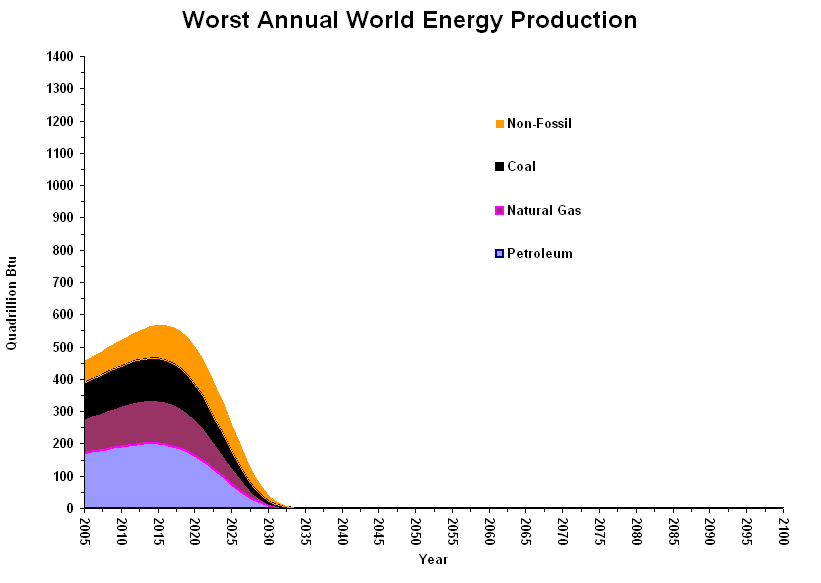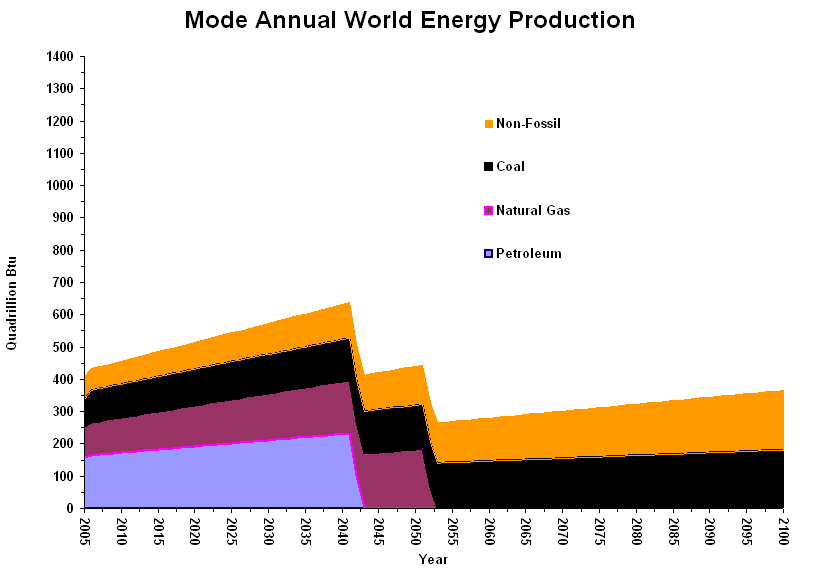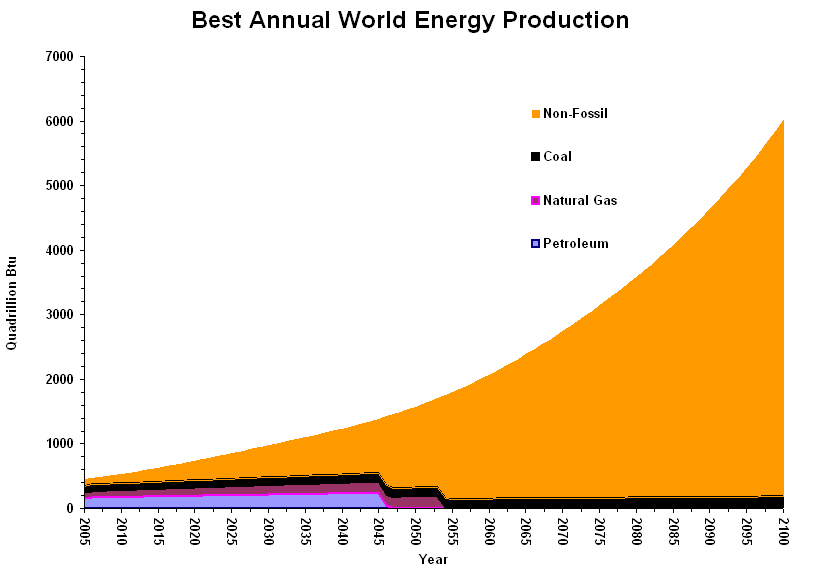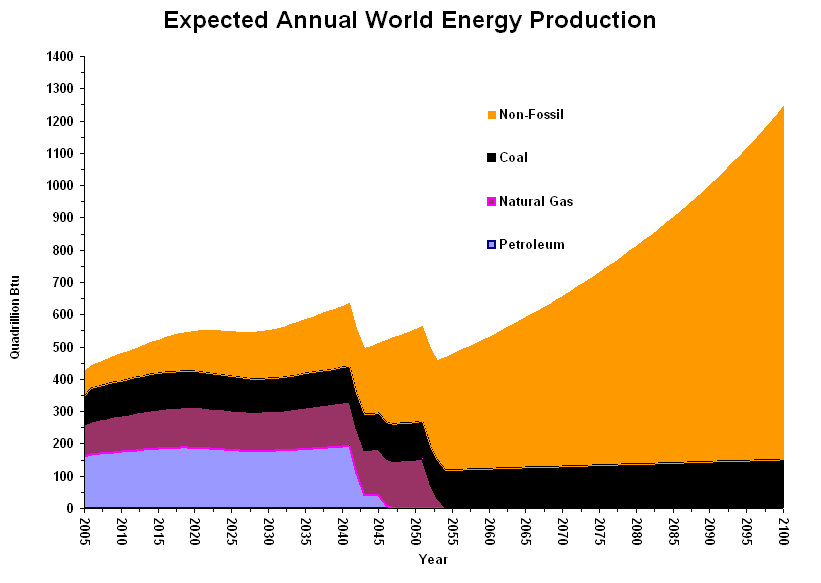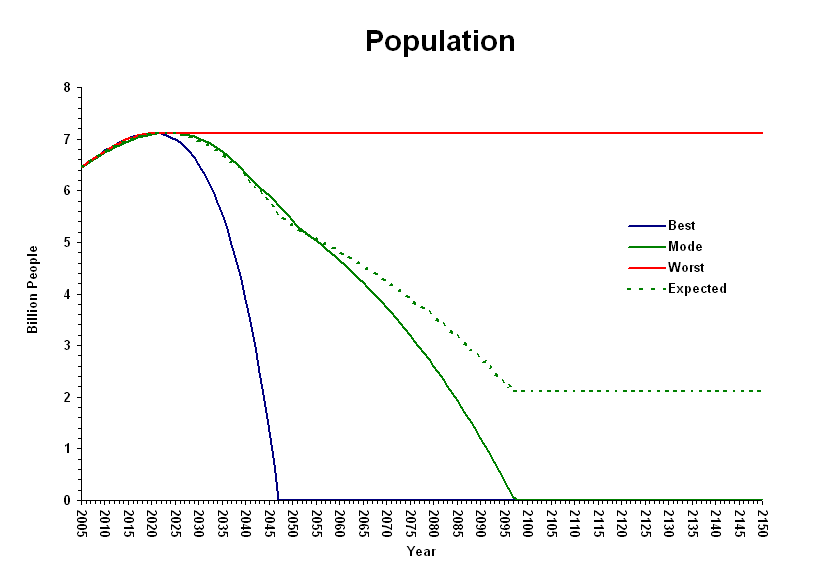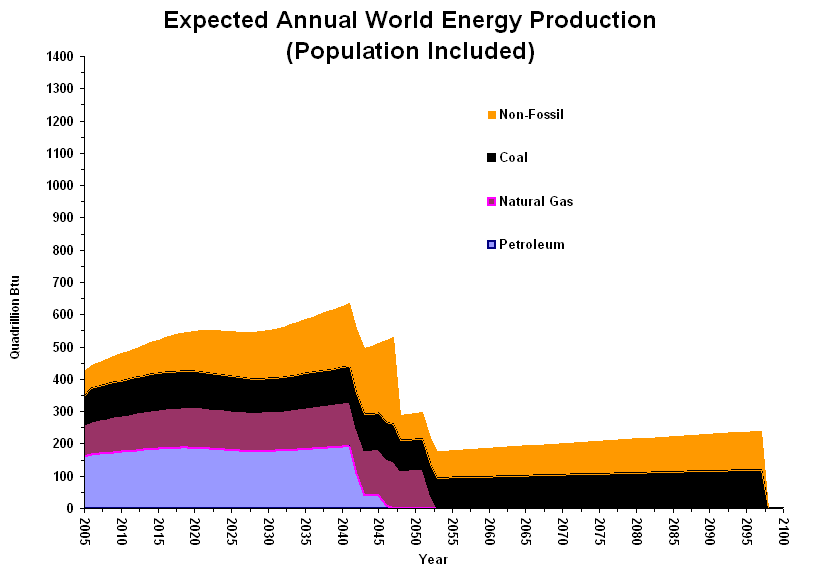|
Energy During this century, the world's production of energy will undergo dramatic changes due to the exponential growth in demand exhausting the supply of fossil fuels and, possibly, overwhelming natural systems that support life on Earth. Several scenarios are presented below, using different estimates of fossil fuel reserves and growth of non-fossil fuel production, followed by population projections for all scenarios.
ASSUMPTIONS: Total energy production tracks with per capita ecological footprint for 1962-2003, with the population growth rate extrapolated from that period. Fossil energy ratios are the same as they would have been if cumulative consumption was extrapolated. The lowest estimates for reserves are used (quadrillion Btu at the end of 2004): 5928 for oil, 6092 for natural gas, and 22179 for coal.
ASSUMPTIONS: Cumulative fossil energy production and non-fossil energy production from 1980-2004 is extrapolated, with the mode estimates for reserves used: 7407 for oil, 6737 for natural gas, and 23473 for coal.
ASSUMPTIONS: Total energy production is extrapolated from the cumulative ecological footprint for 1962-2003.Cumulative fossil energy production from 1980-2004 is extrapolated, with the high estimates for reserves used: 8301 for oil, 7054 for natural gas, and 24767 for coal. ASSUMPTIONS: The actual energy production matches a PERT estimate using worst, best, and mode cases above; Expected = (Best + 4 x Mode + Worst)/6.
ABOVE: Population-adjusted expected case. See Consumption vs. Population for detail about the cumulative energy vs. population relationship that determines the population drops.
|
